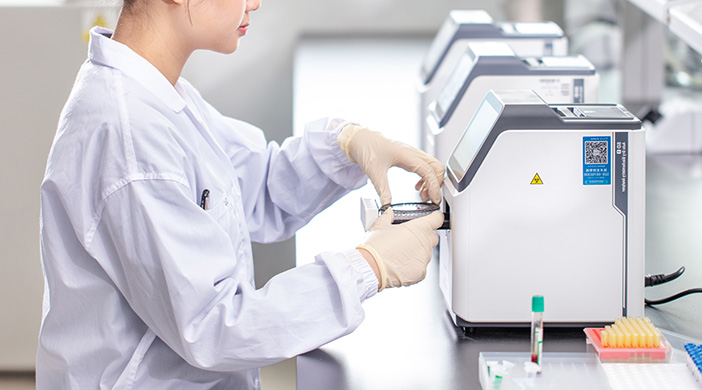How do I choose the right biochemistry analyzer?
A biochemistry analyzer, also known as a clinical chemistry analyzer. It is used to measure the metabolites present in biological samples such as blood or urine. The study of these fluids has made it possible to diagnose many diseases. An example of the use of this type of analyzer is the measurement of urine creatinine to assess the filtration capacity of the kidneys.
When selecting a biochemical analyzer, it is important to consider the need for test automation, the specificity of the reagents and the level of accuracy of the measurement. It is also important to consider capacity (maximum number of samples to be analyzed simultaneously).
How do I evaluate the performance of a biochemistry analyzer?
Several criteria can be used to assess the performance of the equipment.
1. Method of operation: Biochemistry analyzers are classified as fully automatic or semi-automatic. In the case of fully automatic analyzers, samples and reagents are prepared in advance and then placed in the device to manage and analyze them from start to finish. The test chain can be set and the rate adjusted. Fully automatic analyzers are more suitable for medium and large laboratories that need to analyze a large number of samples.
On the other hand, semi-automatic devices are more often designed for small laboratories or medical practices that handle a small number of samples. In these cases, the analyzer must be set up individually for each test point, so testing is slower and cannot be automated.
2. Rate: This is the number of samples analyzed per hour. The use of ion selective electrodes has greatly increased the rate.
3, Random access mode: This provides a high degree of flexibility. Especially for laboratories and hospitals where the number of tests is medium or even high level. They are faced with increasing constraints and must reduce the sample processing time of biochemistry analyzers while increasing productivity. With random access, it is possible to load samples randomly and continuously and obtain results for each test sample as soon as possible.
How do you manage the reagents and samples for the biochemistry analyzer?
This will be determined by the capacity of the analyzer. Semi-automatic analyzers analyze only one sample at a time. Automatic analyzers, on the other hand, are built differently. They generally have two tanks and shelves where reagents are placed. They vary according to the type of sample and the analysis to be performed. Shelves for placing the samples to be analyzed. These vary depending on what tests are to be performed, such as blood, urine, cerebrospinal fluid, etc. The automatic arm draws the reagents from the tubes into the sample cuvettes with the required analytical dose.
One of the key points to consider is the amount of reagents and samples required for the analyzer to perform the test. This can have an impact on operating costs. In the long run, equipment that requires large amounts of reagents will be more expensive.
A system with random access mode has a more flexible sample management model and saves time. It also reduces the risk of human error due to manual handling. The barcode management system allows biochemistry machines to manage these blood samples to be tested in a comprehensive, efficient and reliable manner.
What options are available for biochemistry analyzers?
Some models offer a wider range of analysis types than traditional analyzers. They can be used in specialties such as immunology, endocrinology, toxicology and oncology. Some biochemistry analyzers on the market can perform up to 100 types of analyses. To optimize workflow, there are also biochemical analysis systems that can handle both clinical chemistry and immunoassay samples.
In addition, some biochemistry analyzers have wireless connectivity to ensure better sharing of patient data, especially for laboratories with LIS (Laboratory Information Systems).


